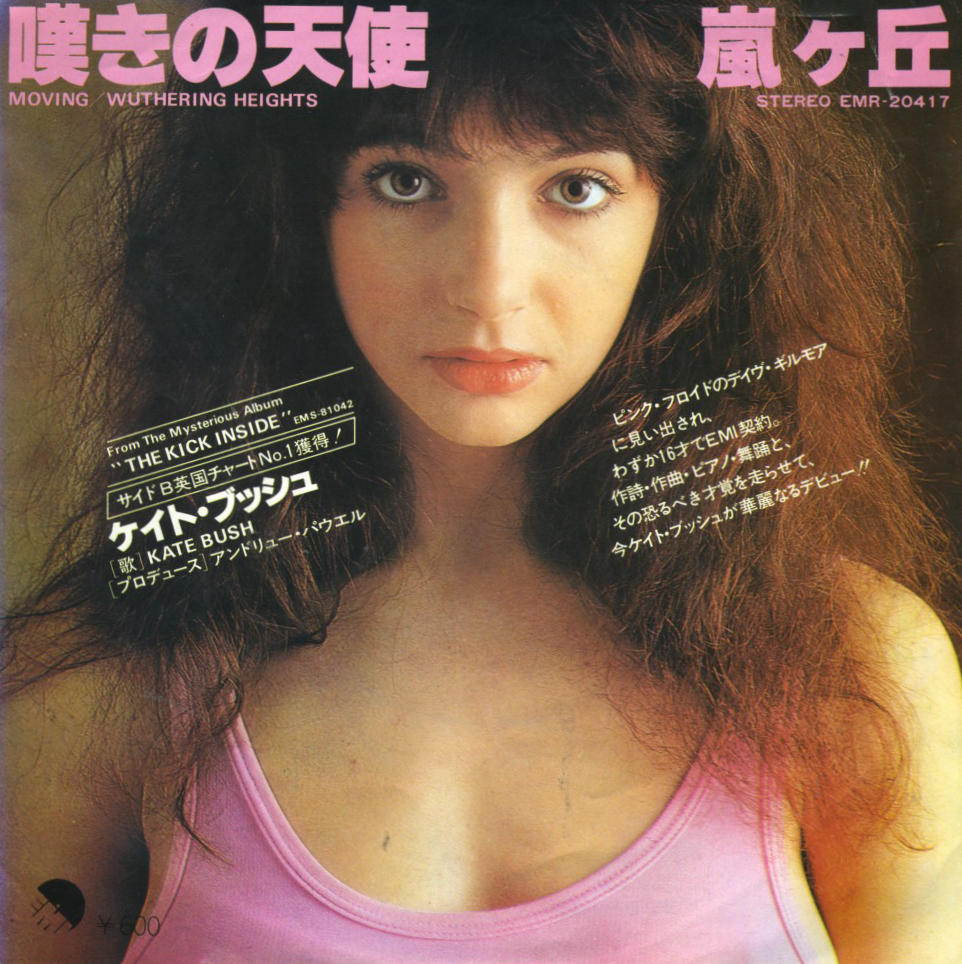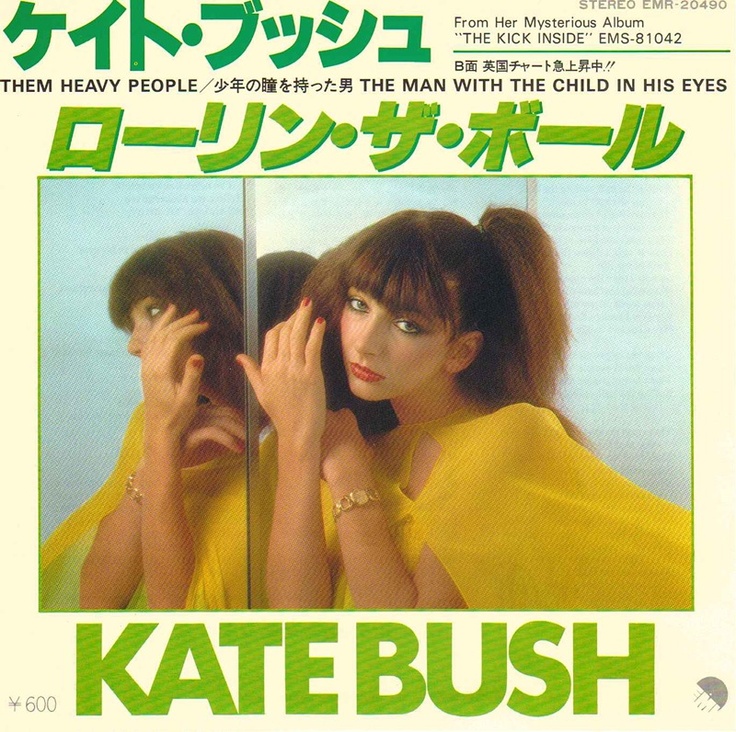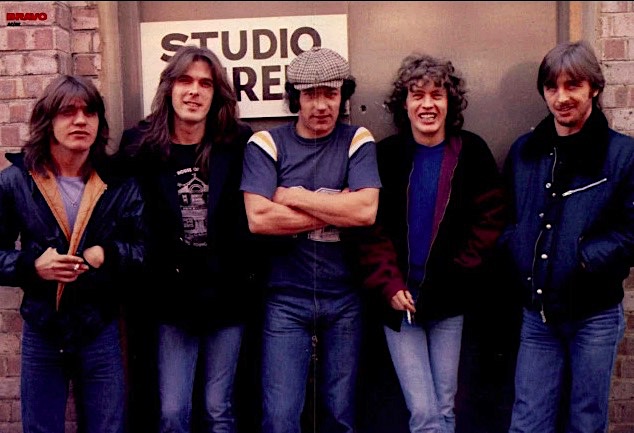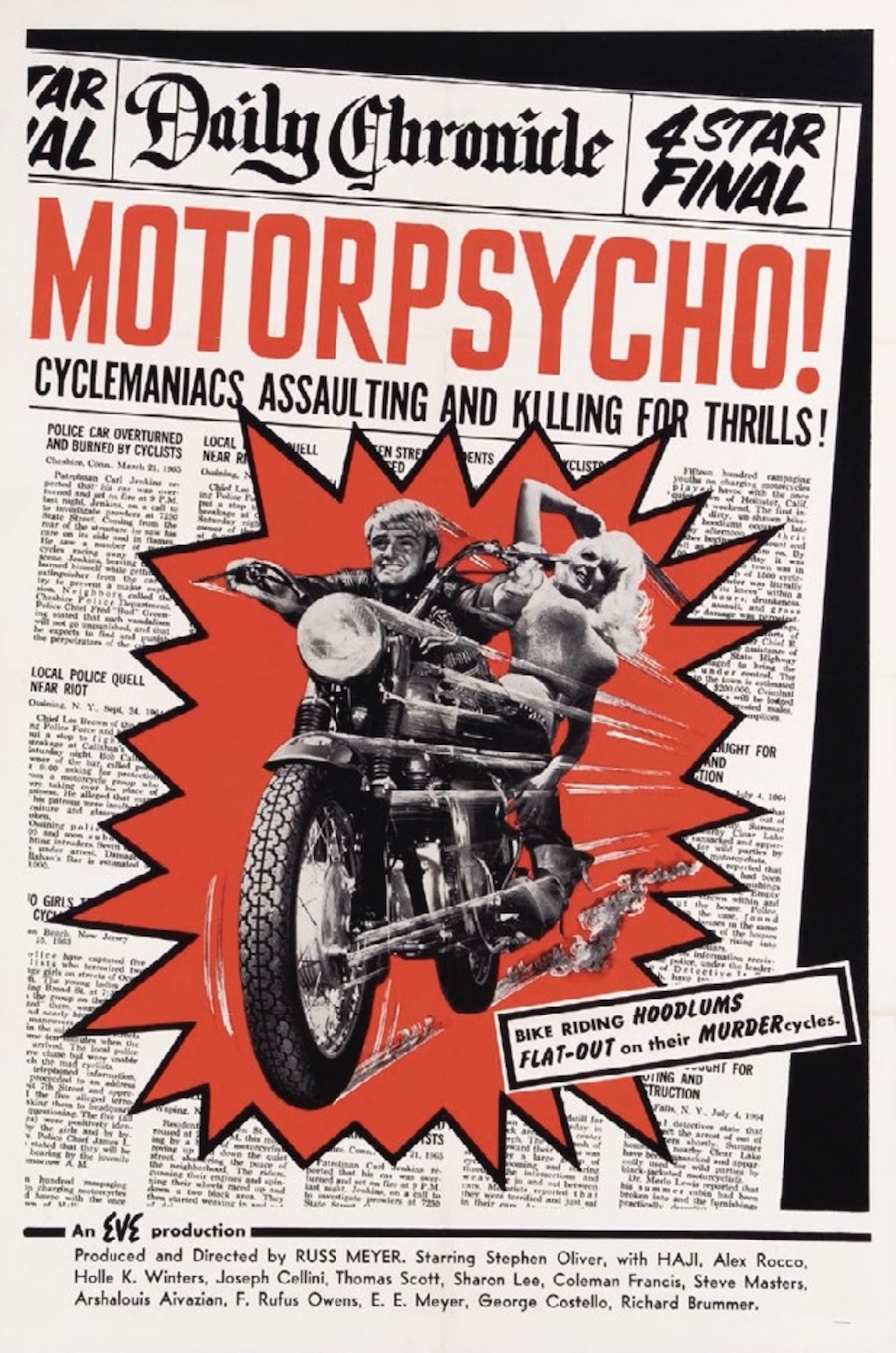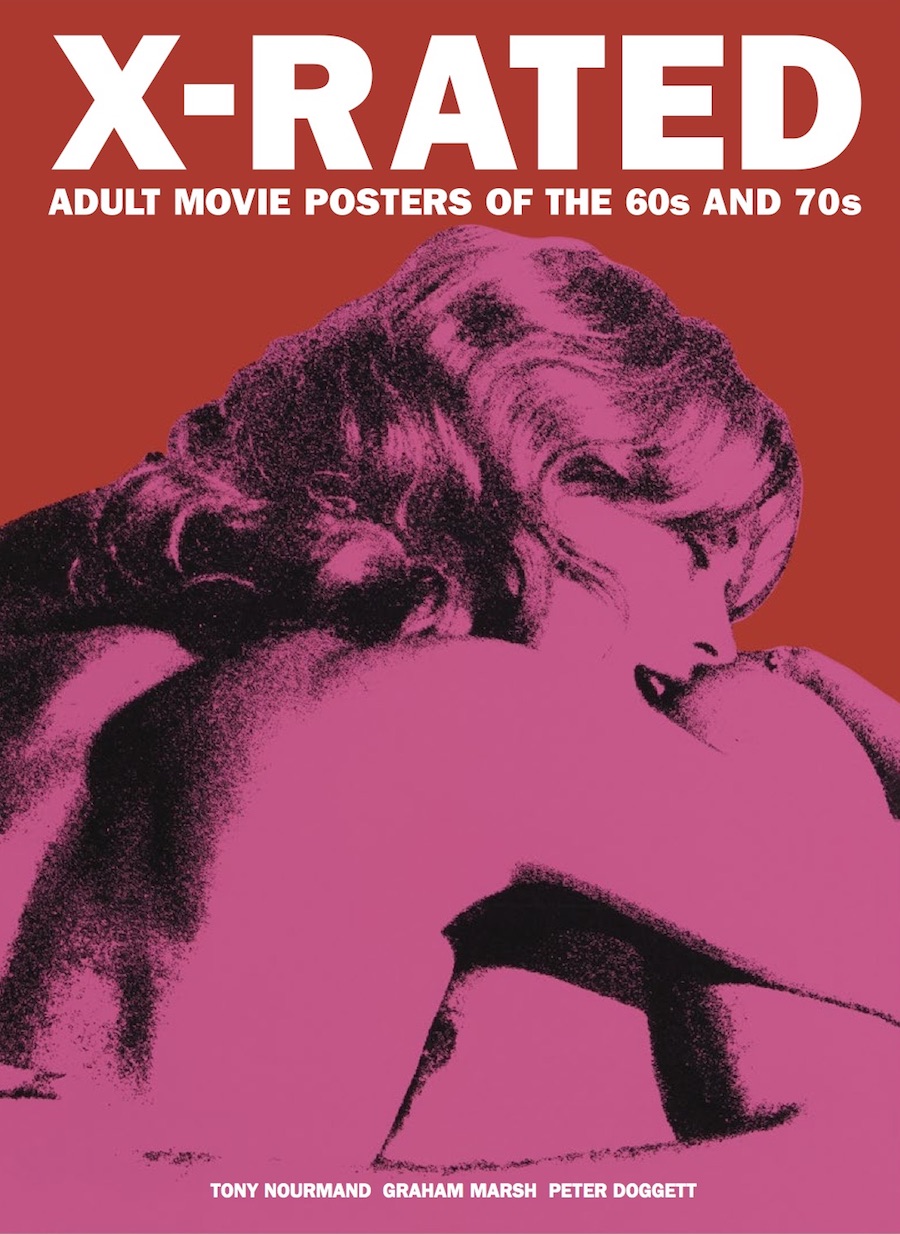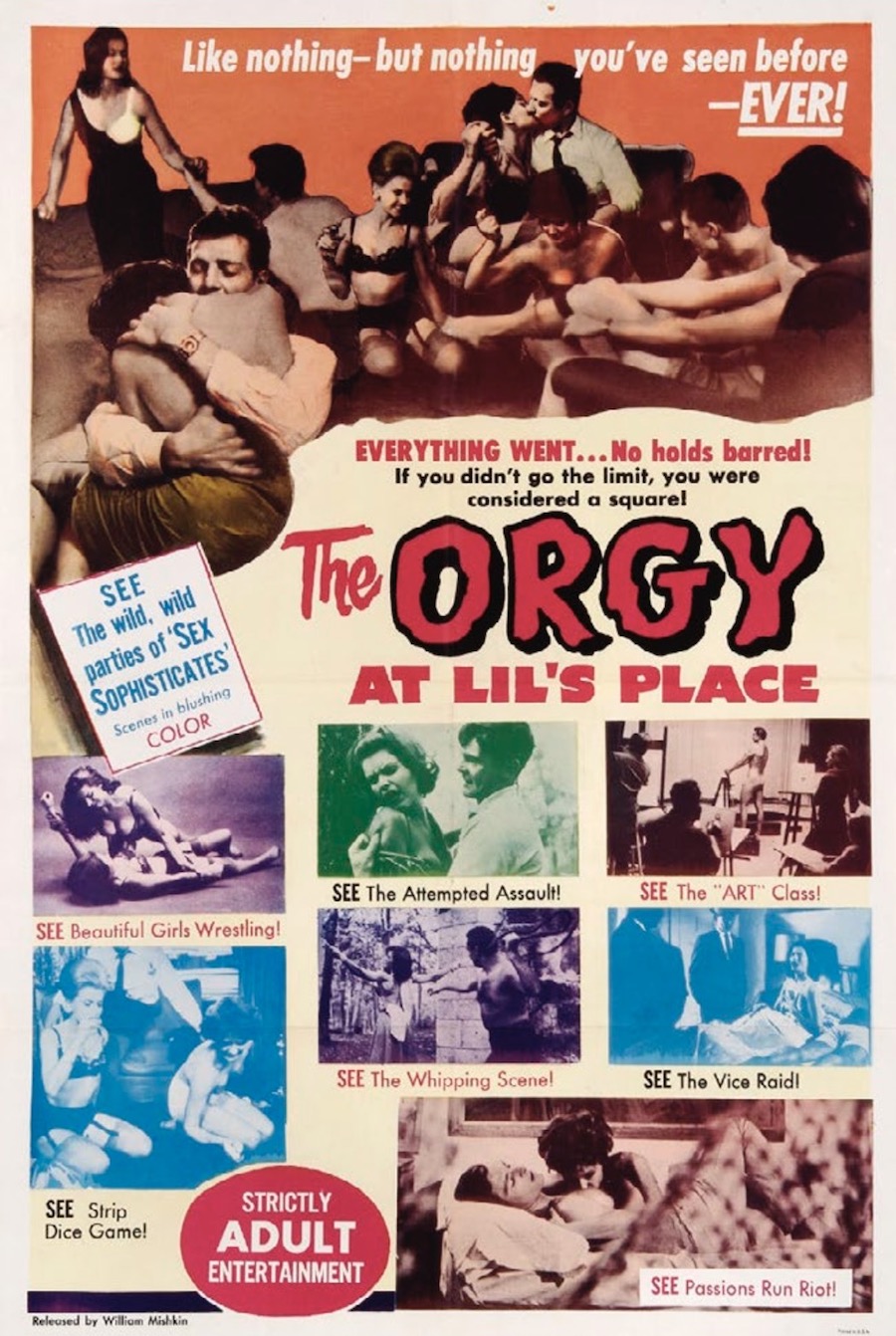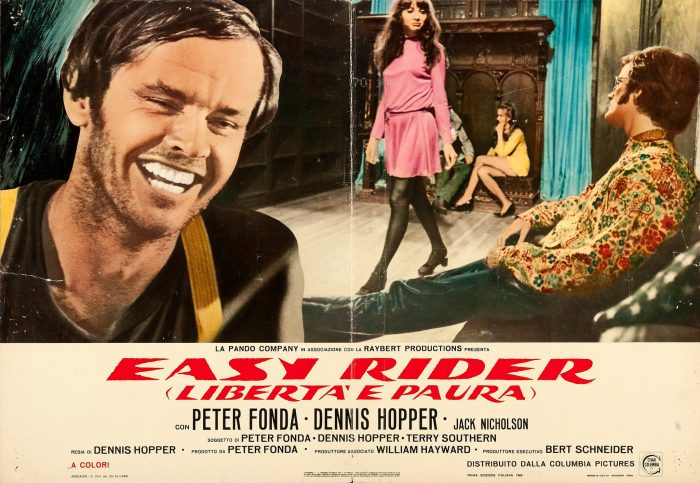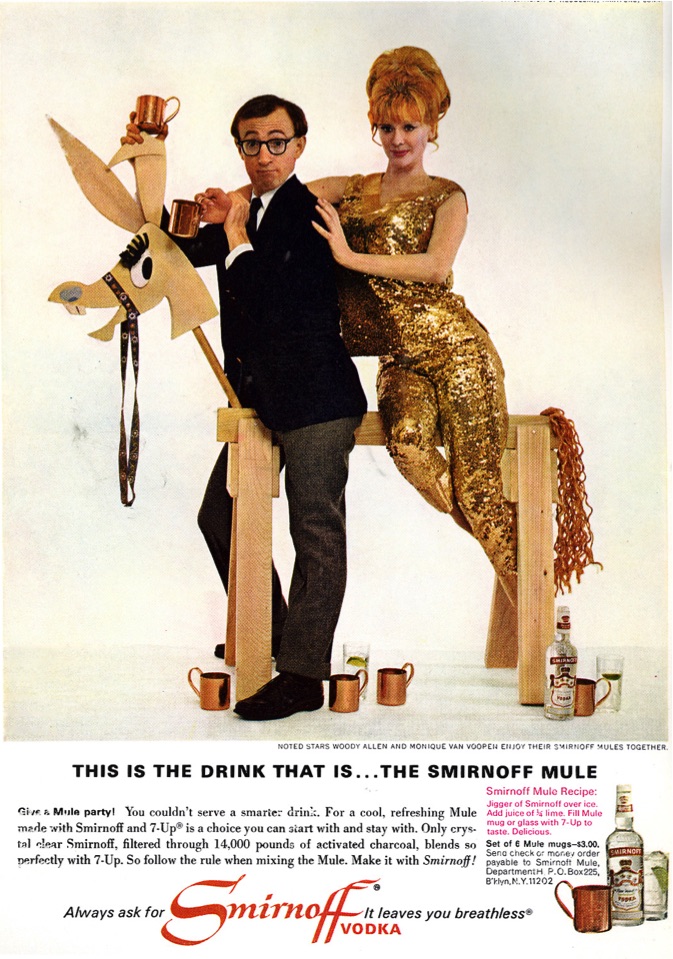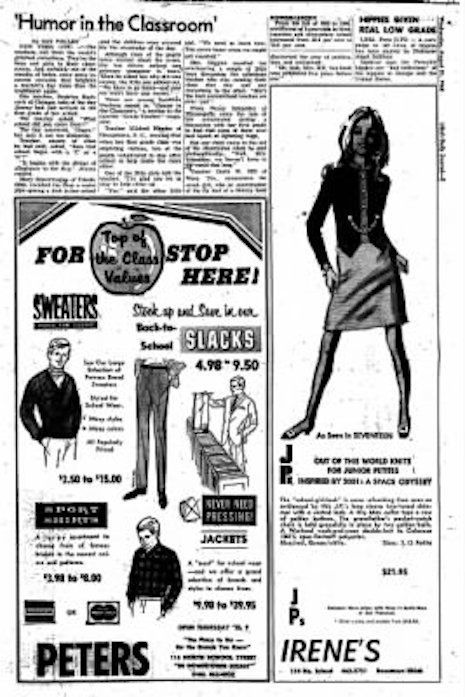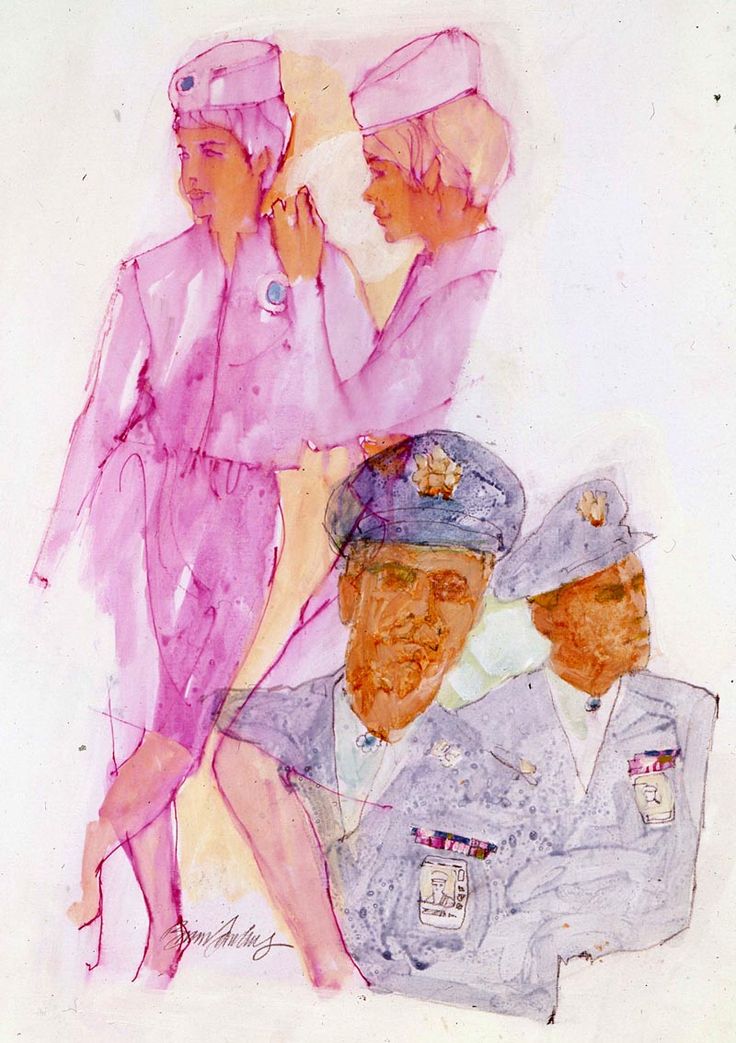
Let’s imagine it’s 1973. I have my bachelor pad, my 28” color TV, swivel chair, hi-fi stereo gear, fondue set and my corduroy bellbottoms. I live in a Space Age world. I have everything I ever wanted. But somehow I feel empty. I feel I’ve mortgaged my happiness on things I don’t really need. I have a lifestyle but no life. There’s something missing. I’m lonely. I’m missing that certain someone special to share all this luxury with.
But relationships are messy. They’re downright difficult. And I don’t know if I’m ready to commit, you know what I mean? I really need someone who is always ready to please, always ready for me and what I want. When I want it. But where can I find such a person? Do they even exist?
I flick thru the latest issue of Man’s World where I find an ad for a life-size inflatable doll…
Just add air…Life-like in every detail…Snuggle up to your own Love Maid.
Eight dollars ninety-five. It all seems too good to be true. But I know nothing about “Love Maids.” I know nothing about inflatable love dolls…but maybe I might know a man who does. Bryan Ferry. He sang about inflatable dolls. He’s the man to ask. Maybe I should call him up?
Bryan, I live in this perfect world, all mod cons, everything I need, but why, why do I have this utter sense of loneliness?
Bryan (for it is he….): In every dream home a heartache… And every step I take. Takes me from heaven.
What do you mean by “heaven,” Bryan?
Bryan: The perfect companion. Deluxe and delightful.
You seem to know a lot about this, brah. Way too much…
Looking for a playmate? Well, here I am. I’m Lori, the latest, wildest, party-time sensation and I’m ready for action…
Bryan: Inflatable doll. Disposable darling… My breath is inside you… I dress you up daily. I blew up your body… But you blew my mind.
Ew. Too much information, man…
The earliest sex doll is credited to Dutch sailors in the 17th century, who used a dame de voyage—a masturbatory doll made of cloth for relieving sexual stress on long voyages. In 1908, the first recorded “manufactured” sex doll made its appearance in psychiatrist Iwan Bloch‘s The Sexual Life of Our Time. Bloch described this doll as “Vaucansons” intended for fornicatory purposes. These were made from:
...rubber and other plastic materials, prepare entire male or female bodies, which, as hommes or dames de voyage, subserve fornicatory purposes. More especially are the genital organs represented in a manner true to nature. Even the secretion of Bartholin’s glans is imitated, by means of a “pneumatic tube” filled with oil. Similarly, by means of fluid and suitable apparatus, the ejaculation of the semen is imitated. Such artificial human beings are actually offered for sale in the catalogue of certain manufacturers of “Parisian rubber articles.”
During the Second World War, it was long rumored but never actually proven that Nazi leader Adolf Hitler ordered sex dolls to be supplied to German troops fighting on the front line. The real change in sex dolls took place in the 1960s with the development of the vinyl inflatable doll with realistic “openings.” These became very popular in the 1970s, as can be seen by the following selection of bizarre adverts. Click on image for a closer look.
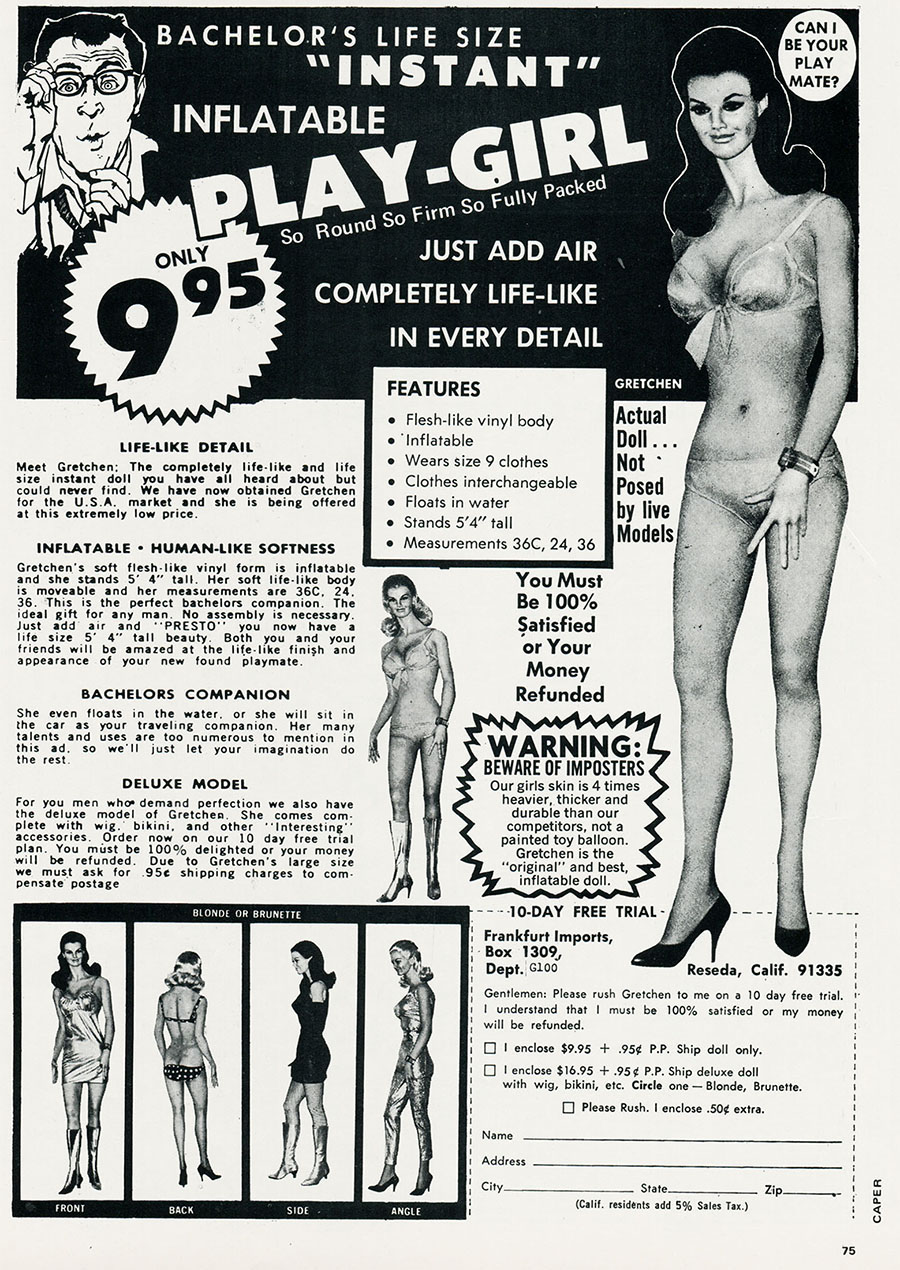
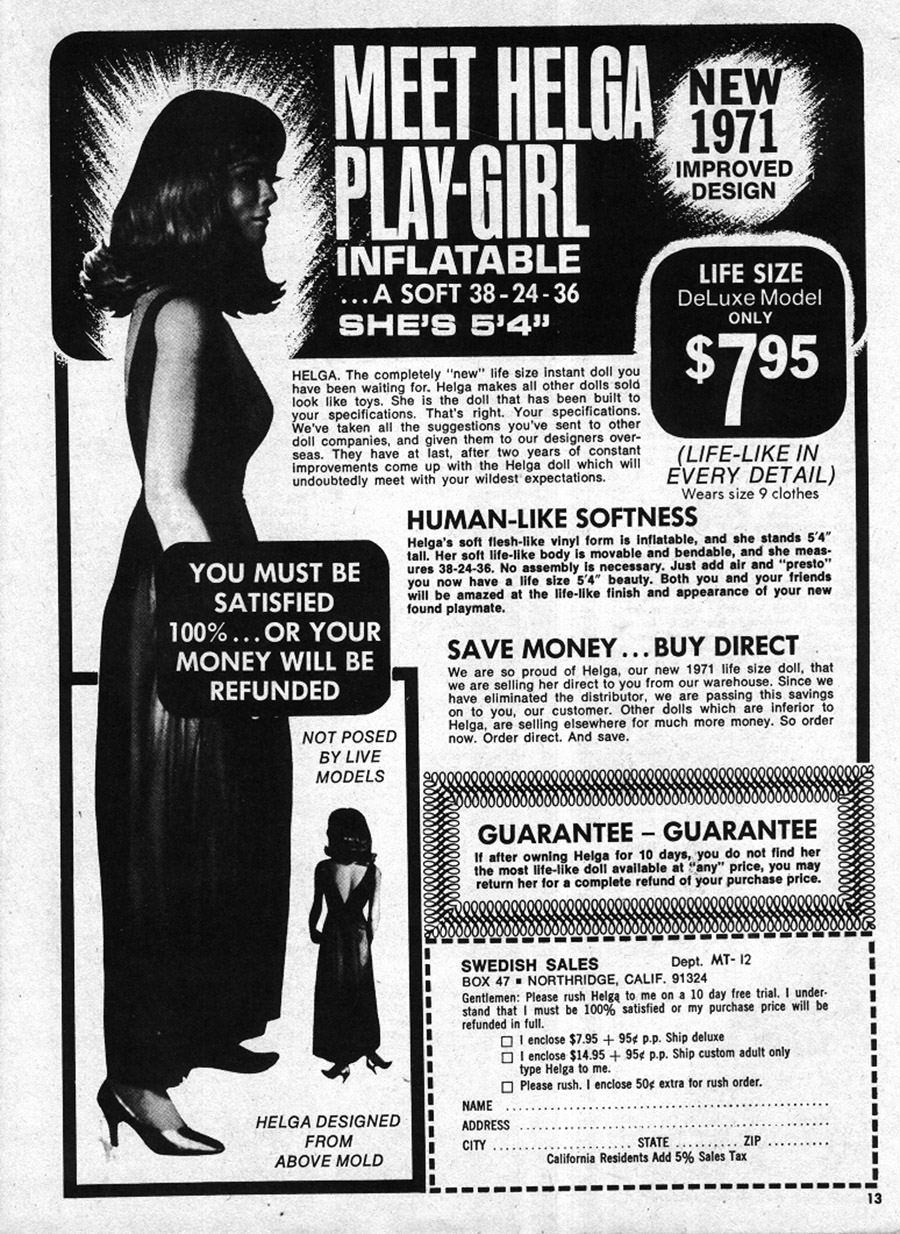

More ads for inflatable bachelor companions, after the jump…
